Everybody loves shopping for the fun gun accessories: optics, lights, lasers, even flashy bits like anodized small parts. Some are fun because they have a direct and noticeable impact on your performance. Others get attention at the range and add a certain aesthetic value to a firearm.
Sadly, this means crucial, albeit less visible parts like mounts and adapters often get overlooked. Too often, enthusiasts will spend the value of their rifle or more on an optic with top-tier performance and a recognizable logo, then attach it to their rifle with a bargain-bin mount.
Mounts may not be fun to shop for, nor are they likely to elicit envy or admiration at the range, but they are essential to peak performance. The best scope in the world can only be as good as the mount holding it.
Why Your Mount Matters
Your mount or set of rings is the interface between your rifle and your optic; no matter how good they are individually, without a secure connection, they’re essentially useless. The most important function of your mount is to hold a zero. Cheap scopes often get a bad rap for not holding zero properly due to recoil or the normal rigors of range trips, but improperly designed or machined mounts are far more often the culprit.
A good mount or set of rings needs to be able to hold your scope securely and adequately clamp to your firearm’s rail. Failure to do either one will result in a “wandering zero,” which is where your point of impact spontaneously shifts without any adjustment to the turrets. Regardless of whether your intended use is target practice, hunting, or self-defense, a reliable zero is essential.
Shop All In-Stock 30mm scope mounts Buy Now
Nearly any mount or scope ring set of even basic quality is sufficient to prevent a wandering zero if installed properly. Unless you are using a rifle with particularly strong recoil, you can usually pick an adequate mount by glancing at a few reviews and not buying the cheapest thing on the shelf.
Where quality mounts and rings start to separate themselves is in impact resistance. A mediocre mount will keep your zero while you’re firing, but a great one will maintain it even if you drop your rifle or bang it into a barricade during a stage. The very best mounts can even take battlefield-level abuse without losing zero or allowing the scope to shift.
Lastly, your mount or set of rings serves to protect the investment you’ve made in your scope. Optics aren’t cheap, and even if your scope is backed by a lifetime warranty the way ours are, it’s still quite a pain to have to dismount it and send it in for warranty if it breaks. Quality mounts help to prevent some of the common causes of optic failure, most prominently recoil.
For all these reasons and more, we really can’t overstate the importance of buying a quality scope mount.
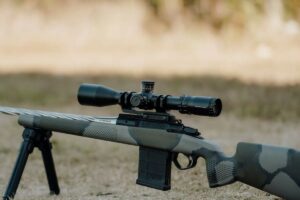
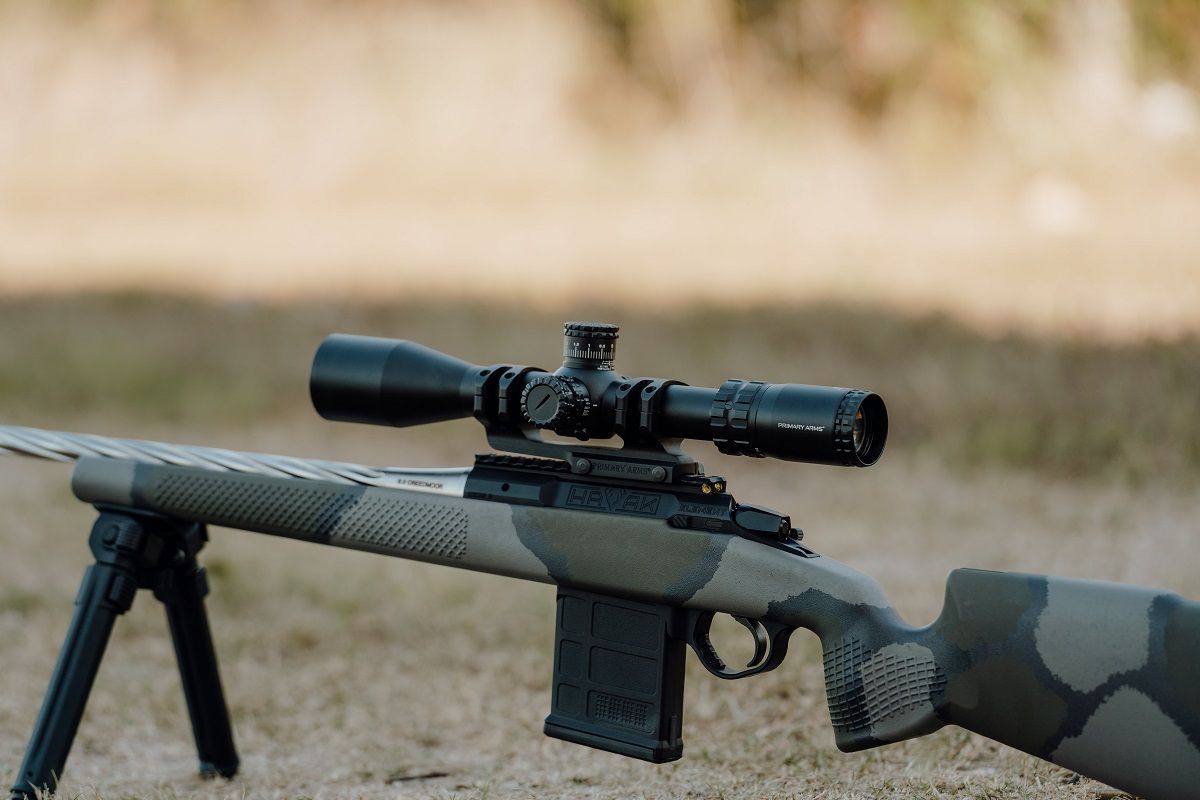
Scope Mount Buyer’s Guide: Criteria
To prevent this article from turning into a book, we’ll limit ourselves to looking just at one-piece scope mounts. If you’re looking for the absolute lightest possible setup and don’t need cantilever functionality, rings may be for you. Most other applications can be well served by a quality one-piece mount.
We won’t be spending much time on main tube size either, since most popular mounts are available for both 30mm and 34mm tubes. For a more in-depth comparison of ring and main tube diameters, you can check out our other article here.
Even with that narrowed focus, there’s a lot of variety in scope mounts. As always, mission dictates gear–your first task should be to identify what scope you’ll be mounting, what firearm you’ll be mounting it on, and what tasks you’ll be using it for. From there, you can determine which mount would be most appropriate for you by considering six primary attributes.
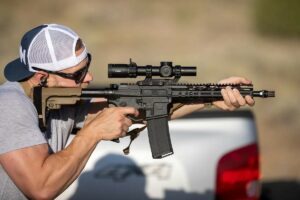
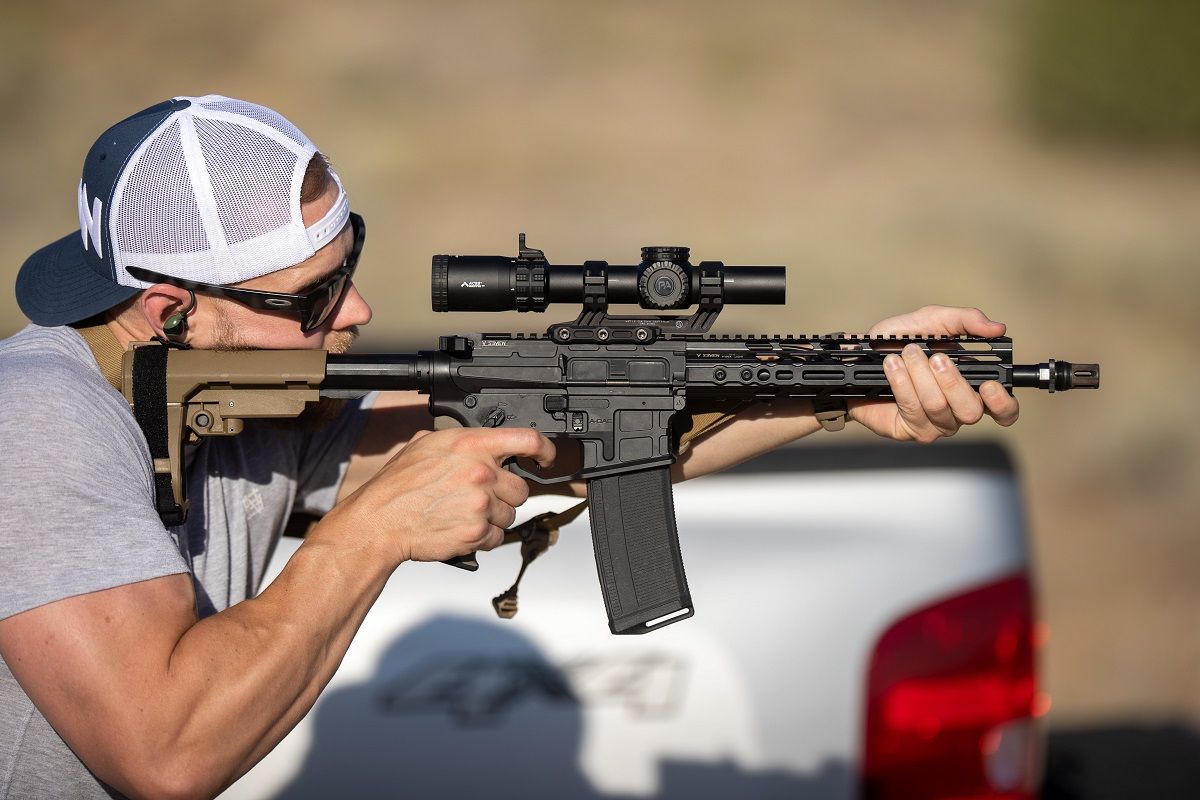
Height
First and foremost, you’ll need to determine the appropriate height of your mount. At a minimum, your mount needs to be tall enough to allow your scope’s objective lens to clear your barrel or rail. For LPVOs, you can essentially choose any height you like; very few are low enough to make mounting impossible. For scopes with larger objective lenses, you’ll need to be more deliberate in your shopping.
Beyond ensuring your mount is high enough to be compatible with your scope and rifle, choosing the correct height becomes more subjective. For precision rifles, lower is generally considered to be better. For low- and medium-power scopes, it largely becomes a matter of opinion and use case.
Shop All In-Stock Canted Scope Mounts Buy Now
Rifles intended to be fired from stationary positions, especially prone or bench positions, benefit from the reduced mechanical offset and improved cheek weld of a lower optic height. On the other hand, rifles that will primarily be used when standing upright or while moving often benefit from a higher optic position.
For this reason, 1.93″ high and taller mounts have become increasingly popular in recent years. Many users prefer the more “heads up” stance of the higher optic and benefit from the increased peripheral vision and situational awareness. Extra-tall mounts may allow easier use with night vision or personal safety equipment as well. However, these mounts can be difficult or uncomfortable to use when prone, especially over prolonged periods.


Straight Vs Cantilever
In most cases, the decision between a straight and a cantilever mount is a simple one. Straight mounts are those that hold the scope directly over the clamping surface that attaches to the rail and are usually used for bolt action rifles. Cantilever mounts shift the scope forward relative to the clamping surface and are usually used for AR-15 and similar rifles.
Despite the clear delineation of use cases, there is some overlap, specifically in the area of rifles with monolithic upper rails. Cantilever mounts are designed to accommodate the short receiver of an AR-15, allowing users to achieve proper eye relief while still having the scope attached directly to the receiver. In the case of monolithic uppers, either a straight or cantilever mount can be used.
Monolithic receivers or upper rails can be found on both bolt-action and semi-automatic rifles. For the most part, it makes little difference which style of mount is used, but rifles with particularly powerful recoil are often best served by straight mounts. Straight mounts help to support the optic and prevent flexing, alleviating recoil and preserving the scope.
Shop All In-Stock PLx Scope Mounts Buy Now
However, some cantilever mounts, such as our PLx 30mm Scope Mount, are sufficiently rigid despite their cantilevered design, and so in the case of monolithic rails, it comes down to personal preference.
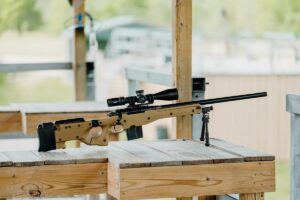
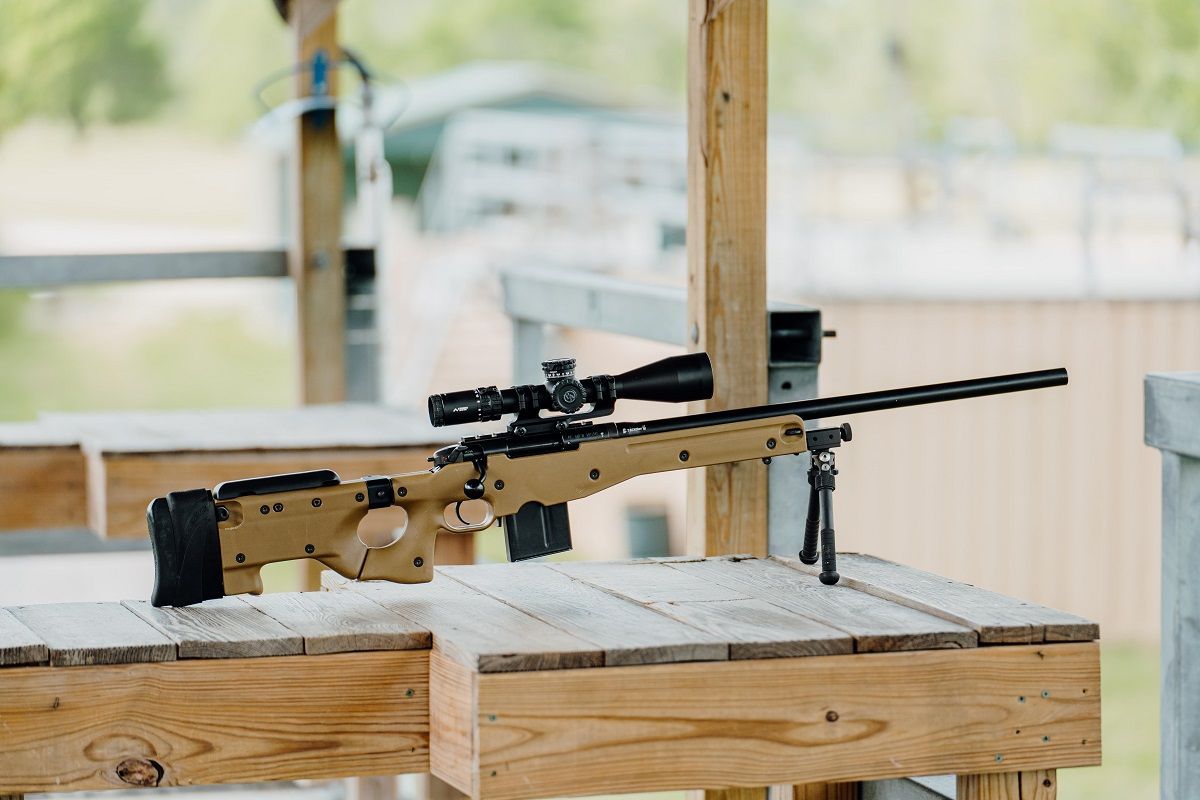
Canted Vs Level
Some mounts can be purchased with a certain amount of angle, called cant, built in. These canted mounts increase the total amount of downward adjustment available to you by shifting your zero higher on the adjustment range.
It works like this. If your scope has a total of 100 MOA of vertical adjustment, then your vertical adjustment is 50 MOA in either direction. But because projectiles drop over distance there’s no reason you would ever need to adjust 50 MOA in an upward direction. On the other hand, if you’re shooting at extremely long ranges or with a caliber that drops precipitously, you might need more than 50 MOA to adjust for bullet drop.
Canted mounts solve that problem by forcing you to adjust up a certain amount–usually 20 MOA, although mounts with other denominations are available–in order to zero. Now, instead of 50 MOA of downward vertical adjustment, you have 70, allowing you to reach farther targets.
As such, these types of mounts are usually only used for long-range rifles. There’s no real reason for the average user to choose a canted mount for a mid-range optic or an LPVO.
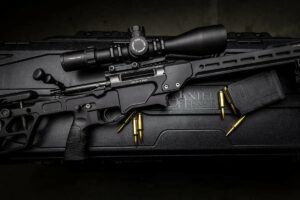
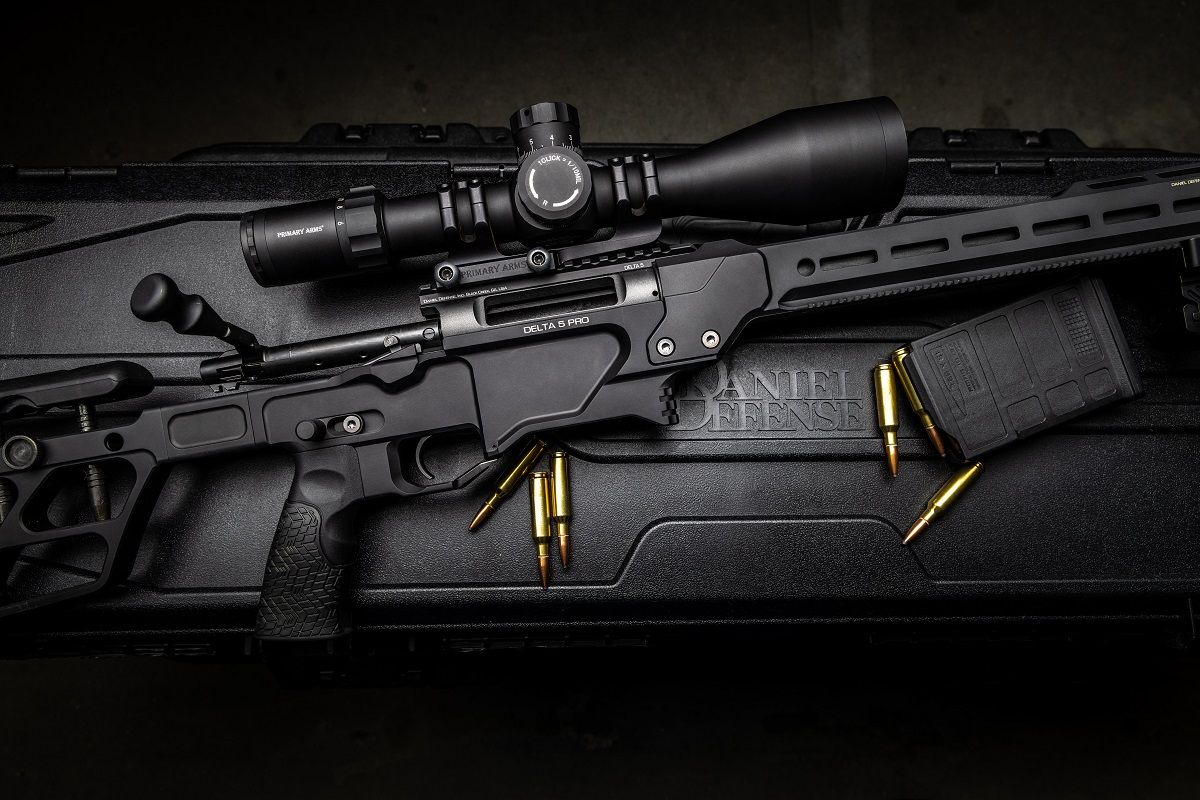
QD Vs Direct Attachment
At first glance, this attribute seems like a simple decision. Why wouldn’t you want quick-detachment functionality? Modern QD attachment systems adequately secure for most cartridges but offer easier installation and removal, as well as the ability to remove the optic in the field without tools.
Every benefit comes with tradeoffs, though, and QD systems are no different. Compared to simple bolts, QD attachment tends to be heavier, albeit only by a few ounces. It also tends to be more expensive, which can be a deal breaker for many buyers.
Shop All In-Stock QD Scope Mounts Buy Now
In deciding between the two attachment systems, consider whether or not you’ll need or use the QD function. If you want to be able to easily move the optic between rifles or if you need to be able to quickly remove it in the event of a failure to access your iron sights, then QD has value. If your scope is staying on your rifle and your backup sighting system is offset, then a QD mount isn’t doing much for you.
Lastly, you may need to consider the unique needs of your rifle. Large QD levers can be painfully in the way on certain side-charging rifles. In some cases, this can be resolved by reversing the mount to relocate the levers to the side opposite the charging handle, but not all mounts are reversible. This would also not be satisfactory on ambidextrous rifles.
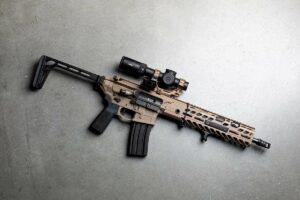
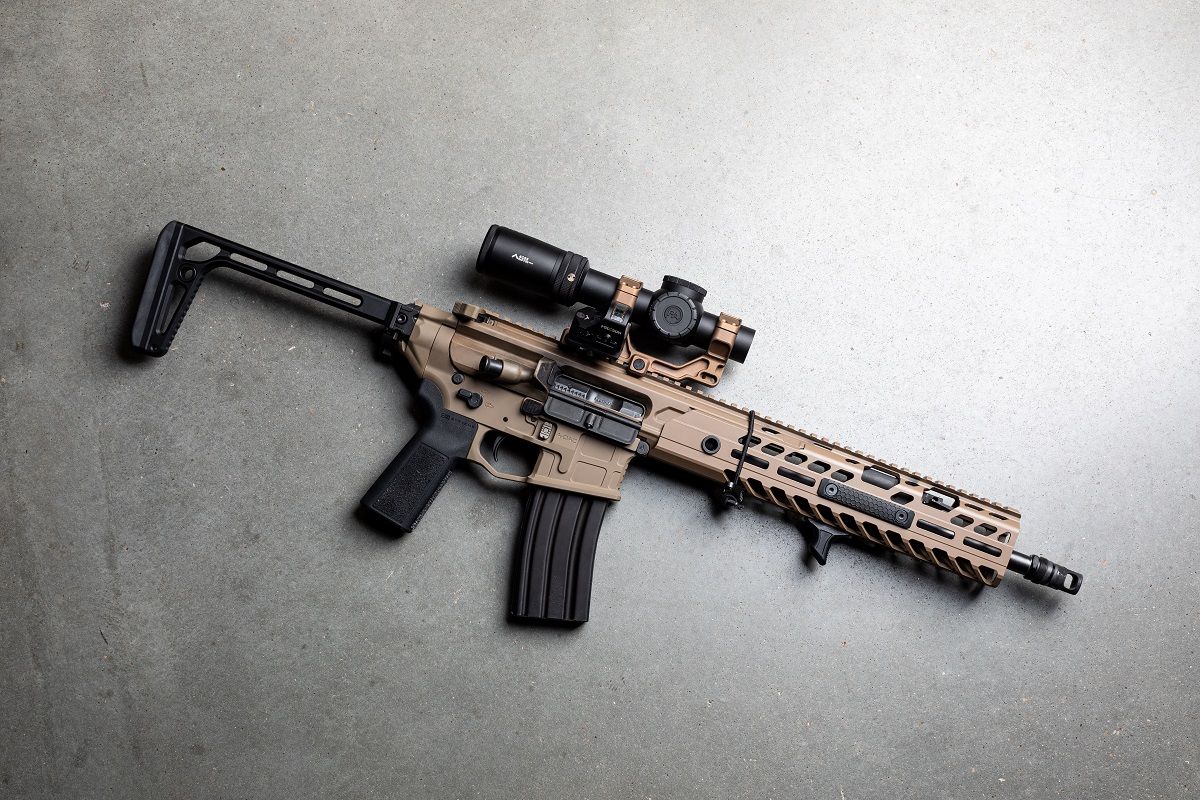
Additional Features
For most of us, all we need from our mounts is to hold the scope securely. In some cases, though, there may be other features you find useful or even necessary.
For example, many night vision users prefer to have a secondary optic mounted to their rifle for passive aiming, since scopes can be challenging to use effectively with helmet-mounted night vision. In such a case, a scope mount with the capability to accept a secondary red dot mount is quite valuable.
There are aftermarket piggyback red dot mounts that clamp directly to the scope’s main tube to accomplish the same thing, but a direct connection to the scope mount itself is much more secure and eliminates the possibility of the red dot getting bumped out of position and losing zero.
Even if you don’t use night vision, the ability to mount a piggybacked or offset red dot may be something you prize in a scope mount. This frees up rail space for irons sights, IR units, or any other accessories you may need.
Certain mounts include other features as well. A few scope mounts, usually those oriented towards long-range applications, integrate anti-cant levels to help prevent you from tilting your rifle. Others have leveling tools to assist you in perfectly squaring the reticle to your rifle.
Shop All In-Stock Optic Accessories Buy Now
With all of these features, your use case will determine how useful they actually are. Anti-cant levels are neat, but if you’re mounting an LPVO to a three-gun competition rifle, you’re unlikely to use it much.

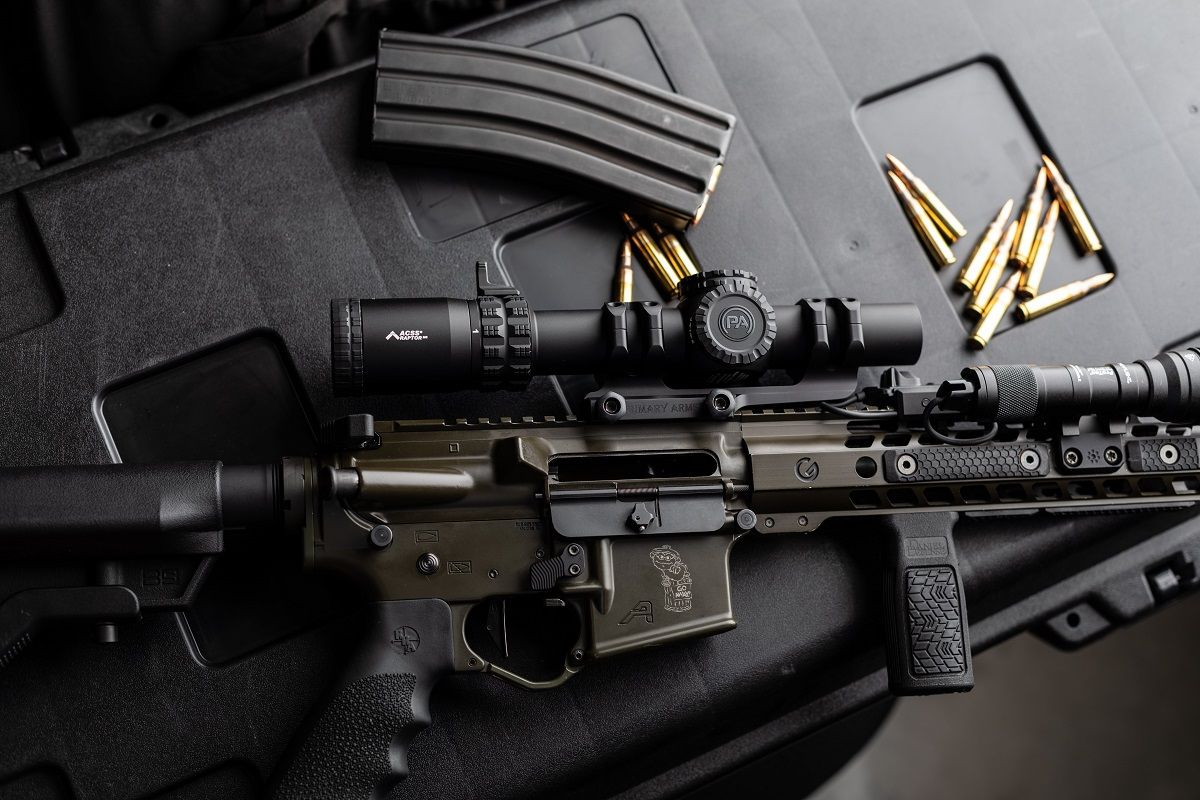
Price
We’d all love to be able to buy the very best all of the time, but few people live with a completely unrestrained budget. For the rest of us, price is almost always a factor.
With mounts, you very often do get what you pay for. This is not to say that there is no application for affordable mounts; on the contrary, most people and most applications are best served by a mid-tier mount. However, a $20 mount will not be as secure or feature-rich as a $200 mount.
It’s important to consider what features you realistically need and which you can compromise to get the best value from your mount. If you’re looking to attach one of our PLx scopes to a .338 Lapua Magnum, then yes, you’ll probably want a top-of-the-line mount. But, you don’t need a mount designed to handle .338 recoil to add a 3-9x scope to your favorite .22.
Of course, most applications will fall somewhere in the middle, as will most mounts. You’ll ultimately have to decide for yourself how much you are willing to spend and how much security you need from your mount.
If you’re looking to save a few dollars, though, the first place to start is with features. Consider opting for a direct attachment mount rather than QD, or forgoing advanced features like secondary optic mounting if you won’t need them. With all that in mind, let’s take a look at a few optimal mounts for various applications.;-

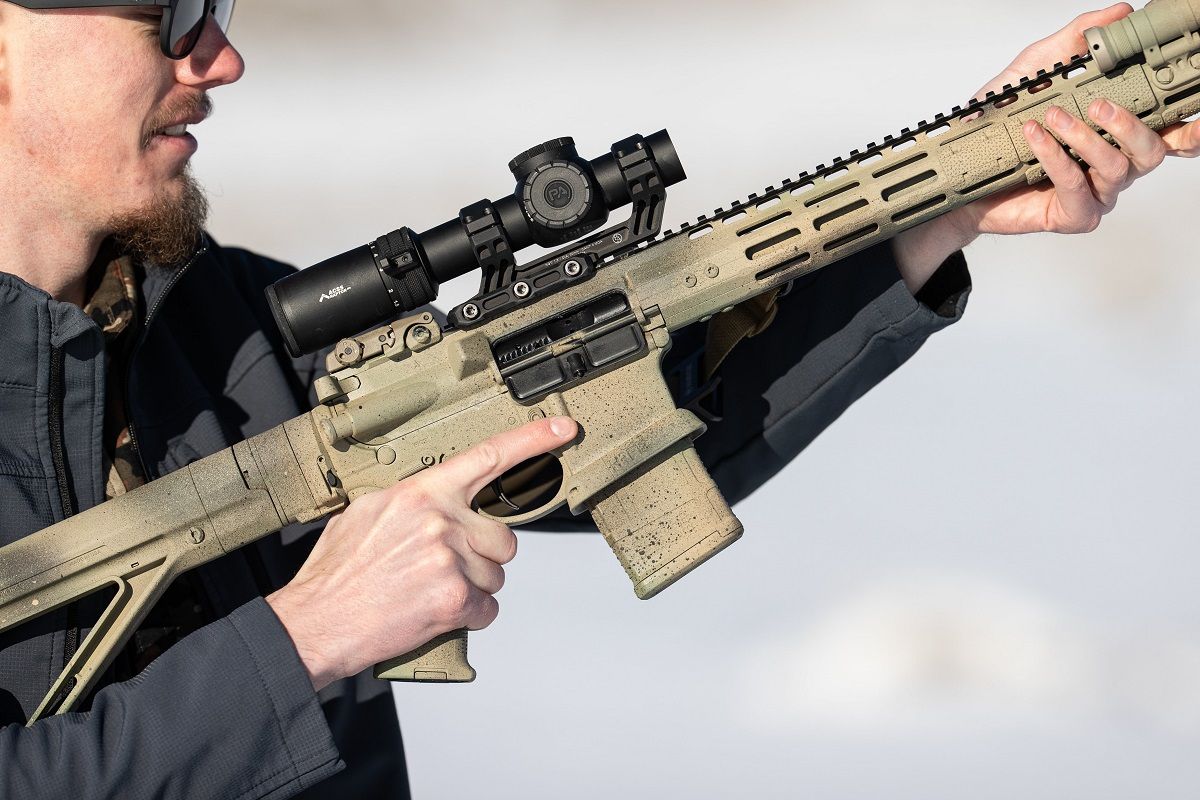
Mounts For AR-15s
There are a few exceptions, but for the most part, AR-15s tend to be very lightweight rifles. Their recoil is generally mild as well, so a big, rugged mount isn’t required unless you’re shooting a .458 SOCOM or planning to run your rifle in some truly demanding circumstances.
An AR-15 scope mount should almost certainly be cantilevered. Again, there are exceptions—specifically, AR-15s with monolithic upper rails—but your average AR-15 will need a cantilevered mount to achieve proper scope positioning without bridging the gap between your receiver and rail.
Most AR-15s have iron sights as well, usually mounted inline with the top rail. For that reason, we tend to bias toward QD mounts for AR-15s; that way, should your scope or mount fail or become obscured, you can quickly remove it to access your iron sights.
Shop All In-Stock ADM Scope Mounts Buy Now
American Defense Manufacturing’s popular Recon mounts are an excellent example of a quality AR-15 mount. They’re cantilevered, QD, and extremely rugged without becoming excessively heavy. For those looking to shave off every possible ounce from their rifle, they’re even available with titanium levers to save some weight.

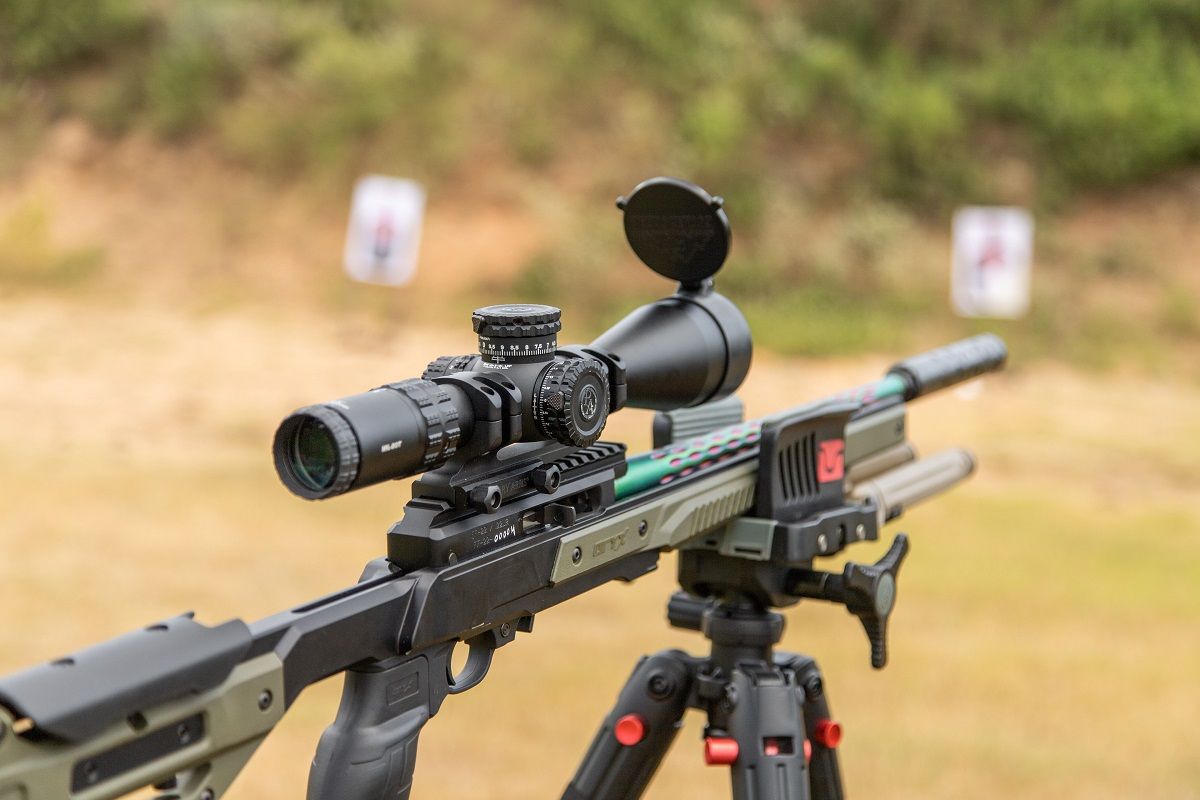
Mounts for Precision Rifles
Precision rifle mounts are the flipside of that coin, and opposite AR-15s in almost every way. These mounts need to attach with absolute security and then maintain that position even in the face of some very stout recoil. We prize rigidity very highly in these mounts, as well as the presence of at least one recoil lug independent of the mounting mechanism.
Some QD mounts can achieve extremely impressive mounting security and recoil resistance, but you tend to pay a premium for that level of quality. Since precision rifles often don’t feature iron sights, it generally makes sense to forgo QD functionality in favor of a direct attachment system. This lets users more precisely control the amount of torque attaching their mount to their rifle and usually saves a few dollars.
Many precision rifles are designed to shoot at extended ranges, so it’s wise to consider your drop profile and longest engagement distance to decide if you’ll need a canted mount before purchasing.
Shop All In-Stock Griffin Armament Scope Mounts Buy Now
For most bolt-action rifles, a straight mount is required. Griffin Armament offers a prime example of what we look for in a mount for a precision bolt-action rifle with their SPRM series of mounts. They’re available in a variety of heights with or without cant and even support piggyback optic mounting.
For a semi-auto rifle or a bolt gun in a chassis with a monolithic rail, you can’t go wrong with our PLx® Cantilever Mount. Despite the cantilever, it’s incredibly rigid and thoroughly tested on a SCAR 17 with a variety of optics to ensure recoil resistance. Three evenly spaced cross bolts provide uniform pressure across your Picatinny rail, while the dual-recoil lugs resist movement when firing. Like the SPRM, they’re available with or without built-in cant.

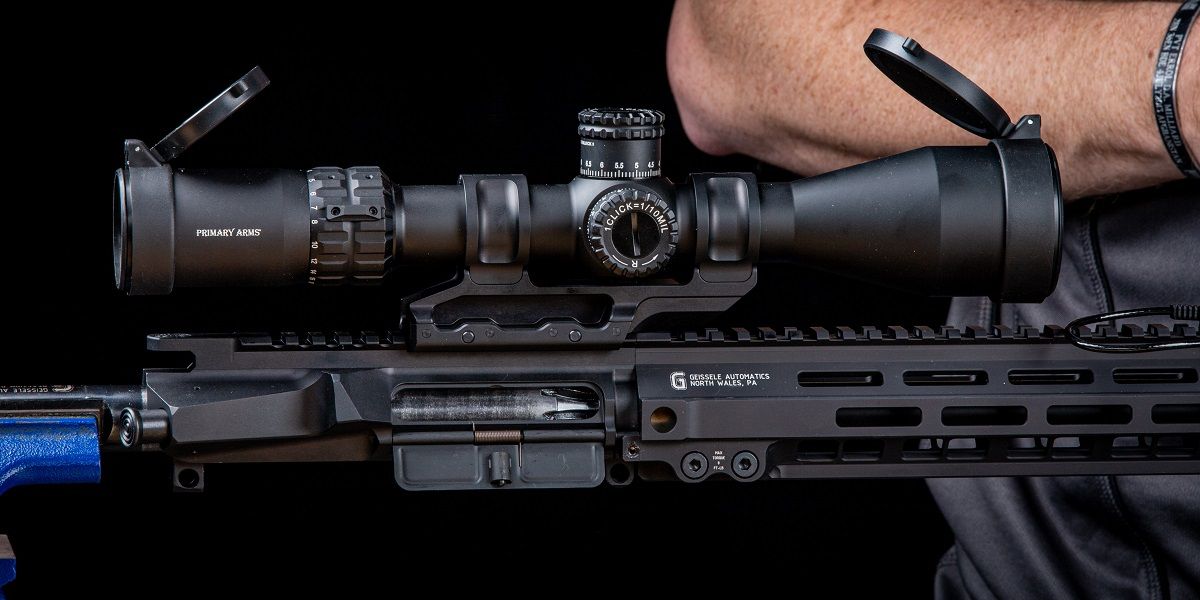
Extra-Tall Mounts
Standard one-piece optic mounting height is usually 1.5 inches, but as we discussed above, certain applications benefit from a taller mount. Mounts are available in a wide variety of heights, but we’re slowly seeing 1.93-inch mounts cement themselves as the standard extra-tall option.
These mounts are usually cantilevered since they’re used almost exclusively on AR-15s and similar rifles; precision guns don’t often benefit from the extra height. Since extra-tall mounts lend themselves best to CQB and fast-paced, upright target engagement, QD function is not especially required. If you’re optic fails in the middle of a match stage or training drill, you’re not likely to have time to remove it and flip up your irons.
Instead, users who want a secondary sighting system would be better served by selecting a mount with the capability to support a piggybacked or offset red dot. That said, there’s no real reason to avoid QD mounts in extra-tall scopes either if you prefer them.
Unity’s FAST LPVO mounts check all of our boxes for an extra tall mount. They’re 2.05″ rather than 1.93″, but such minute differences are more a matter of personal preference than function. They use direct bolt attachment but feature an integrated mounting system for any offset optics you’d like to add.
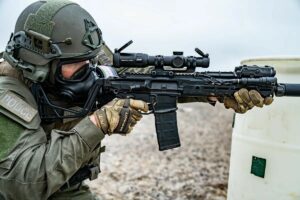

Summary
In the end, it all comes down to your scope, your rifle, and your needs. Each situation is different, and there’s a perfect time and place for each and every mount we carry.
Start by determining which attributes you need simply to be compatible, such as height and cantilever, then work your way through which features you need, and which can be passed over. And of course, should you ever have any questions, feel free to reach out to our excellent customer service team at 713-344-9600 or by email at info@primaryarms.com. Our representatives are all highly educated on optics and accessories and always happy to help.



